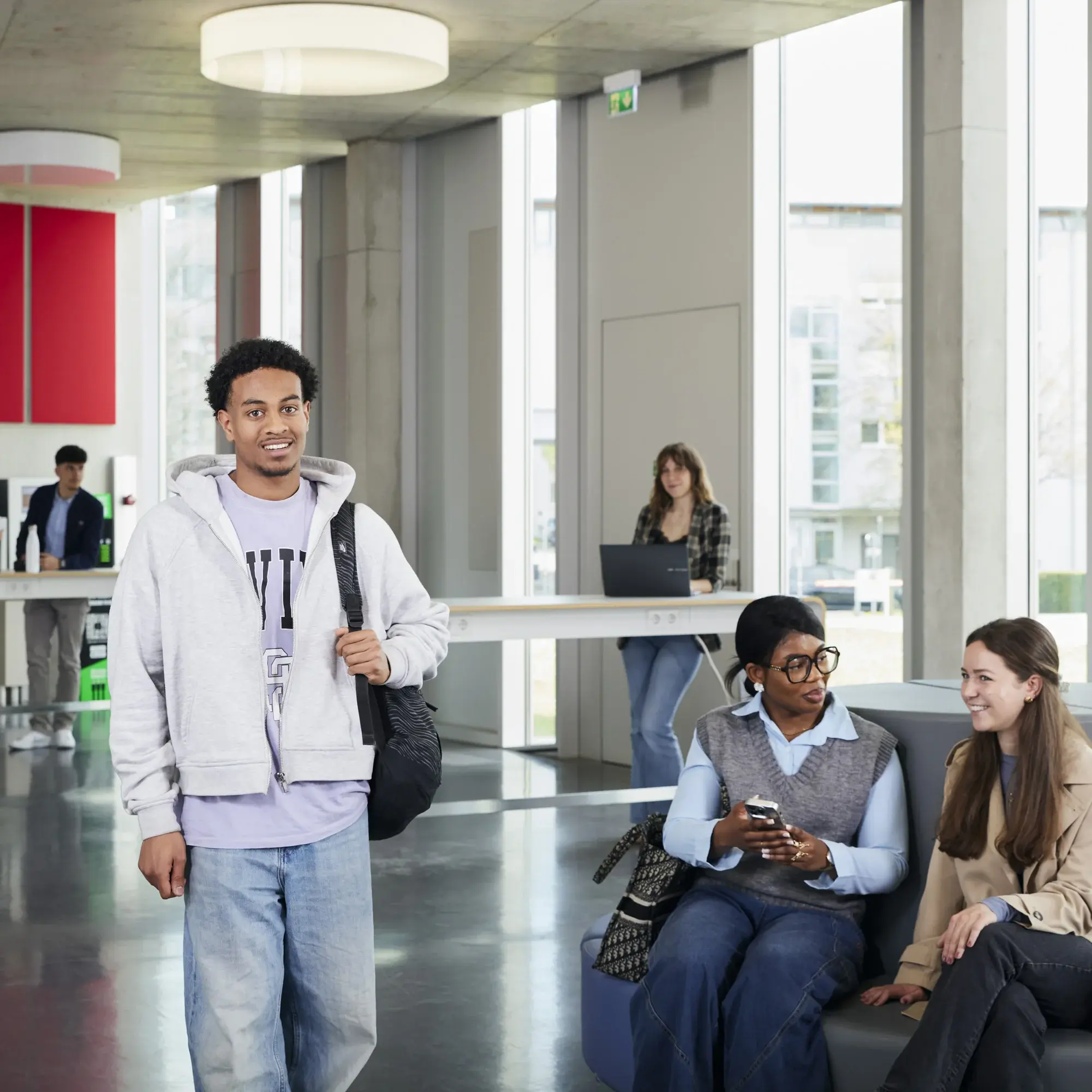


Graduate survey
The HdM is very interested in finding out more about the careers of its graduates and benefiting from their experiences with their studies, the transition to working life or further professional developments. To this end, we conduct an annual graduate survey. As part of this scientific study, graduates from the previous examination year are surveyed and asked to give their assessment of various study-related topics and events using a questionnaire. The results are of great importance for the degree programmes and our quality management. They help us to keep pace with the constantly changing demands on higher education, to respond to the needs of society and the economy and to continuously develop our degree programmes. In this way, former students can make a significant contribution to changing the study conditions and career orientation of the degree programmes.
Background information on the process and the project
Like many other universities in Germany, we conduct the survey with the Institute for Applied Statistics (ISTAT). There, the HdM is involved in the co-operation project Graduate Studies (KOAB). This means that the core questionnaire designed according to the requirements of the participating universities is identical for all participants and enables us to view the results in the light of relevant comparative values (benchmarking). In addition, the data collected can be used to address scientific questions.
ISTAT is responsible for conducting and analysing the online survey and provides us with the results. For this purpose, the university simply informs ISTAT in preparation for the survey how many graduates have completed the degree programmes offered during the survey period. This makes it possible to create sufficient access codes and calculate the response rate. However, graduates are only contacted directly by the HdM and invited to take part in the survey. ISTAT does not receive their names, email addresses or other data that would allow conclusions to be drawn about individual persons. If participants give their consent at the end of the survey and provide a contact option, ISTAT will contact them directly in approx. 4 to 5 years for participation in a follow-up survey. Since stable professional positions often only arise a few years after graduation and statements on the required competences in everyday working life can therefore be substantiated, we would like to ask you to agree to participate in the follow-up survey.
FAQs on the graduate survey (as at 25/09/2024)
Every year, graduates who completed a Bachelor's or Master's degree programme at the university in the previous year are invited to take part in the survey (i.e. in 2024 all those who completed their studies between 1 September 2022 and 31 August 2023 and therefore belong to the examination cohort of the academic year 2023).
The survey is usually open from October to February. At the beginning of November, the HdM writes to the graduates by email and invites them to take part in the survey. The letter contains the link to the questionnaire and the individual access code. For reasons of sustainability, we refrain from sending printed invitations by letter, even if this means that some graduates who do not have a (current) email address will unfortunately not be reached.
To ensure that only people who belong to the target group take part in the survey, it is necessary to enter an access code. The access code can be found in the invitation letter. The access codes were generated automatically and do not allow any conclusions to be drawn about a person's answers. Using the access code, it is also possible to interrupt the survey and complete it at a later time. Based on the access codes used, we can track who has not yet participated and write to these people a second time if necessary. However, we cannot see under which access code which information was provided.
Yes, the survey can be interrupted at any time and continued later as long as the survey period has not yet ended. Information already provided will be retained.
Careers are multifaceted - both paths to university, study programmes and career prospects. In order to do justice to this, the questionnaire consists of corresponding subsections. This helps to obtain an overall picture that is as meaningful as possible. It also prevents you from being contacted at shorter intervals for several small surveys. You should allow a total of approx. 30 minutes to complete the questionnaire. However, you can also complete the questionnaire step by step.
The invitations are sent via the e-mail addresses that you last provided as contact details at the HdM. Only a small group of HdM employees have access to these addresses in the course of the graduate survey. The invitations are also prepared and sent internally at the HdM. ISTAT, as a partner of the graduate survey, never receives access to the names, email addresses or other personal data of graduates that would allow conclusions to be drawn about individual persons - despite the very high data protection measures in place there as well.
Simply send an e-mail to: absolventenbefragung@hdm-stuttgart.de
Legal information & data protection
According to the State Higher Education Act, universities may store and use personal data to maintain contact with their graduates. Graduate surveys are related to studies and are therefore a task for the fulfilment of which the university may use the available data. If someone does not agree to this, they can object (via e-mail to the address below) and the data will then be deleted.
Survey results (as at 25/09/2024)
Almost 450 graduates from the 2021 examination year took part in the survey in 2022, with a response rate of 38%. We would like to thank all those who took part for their time and valuable information.
The survey results show that 80% of HdM graduates are satisfied or very satisfied with their studies at the university. This puts HdM slightly above the comparable figure for other universities of applied sciences (73%). Furthermore, 86% of participants would choose the HdM again for their studies, 70% would study the same programme again. They were particularly positive about the practical teaching content and projects on the programme. These were rated as good or very good by 88% and 92% respectively. With regard to the employment situation, there is a high level of satisfaction among participants with their professional situation: 74% are satisfied or very satisfied. The majority of graduates work in the fields of publishing/media/arts/entertainment (27%), IT services (20%), scientific/technical/economic services (18%) and manufacturing (17%). They cite commercial and administrative activities (43%) as their main tasks, followed by technical activities (25%) and artistic activities (13%). Journalistic and communicative activities and the area of research/development follow at some distance. While a good half see a close connection between their studies and their current professional field, other key factors in the decision to take up a particular occupation are personal interests and time flexibility.
Over 300 graduates from the 2020 examination year took part in the 2021 survey, resulting in a 31% response rate. We would like to thank all those who took part for their time and valuable information.
The survey results show that 89% of HdM graduates are satisfied or very satisfied with their studies at the university. This puts HdM well above the comparable figure for other universities of applied sciences (78%). Furthermore, 88% of participants would choose the HdM again for their studies, 74% would study the same programme again. With regard to the employment situation, there is a high level of satisfaction among the participants with their professional situation: 83% are satisfied or very satisfied. The majority of our graduates work in publishing/media/arts/entertainment (31%), IT services (27%) and manufacturing (11%), but also in areas such as scientific & technical services, universities and trade/transport. They cite commercial and administrative activities (38%) as their main tasks, followed by technical activities (31%), artistic activities (13%), journalistic activities, research/development and other activities. More than half of the participants found their (first) job after a maximum of three months of searching. Interestingly, "support in finding a job" and "support in finding suitable internships" are nevertheless aspects in which graduates at both Bachelor's and Master's level are most likely to see a need for improvement.
The results were analysed by degree programme and made available to the deans of studies for reflection. A results report for the entire university can be accessed by university members on the intranet.
If you have any questions, please contact absolventenbefragung@hdm-stuttgart.de